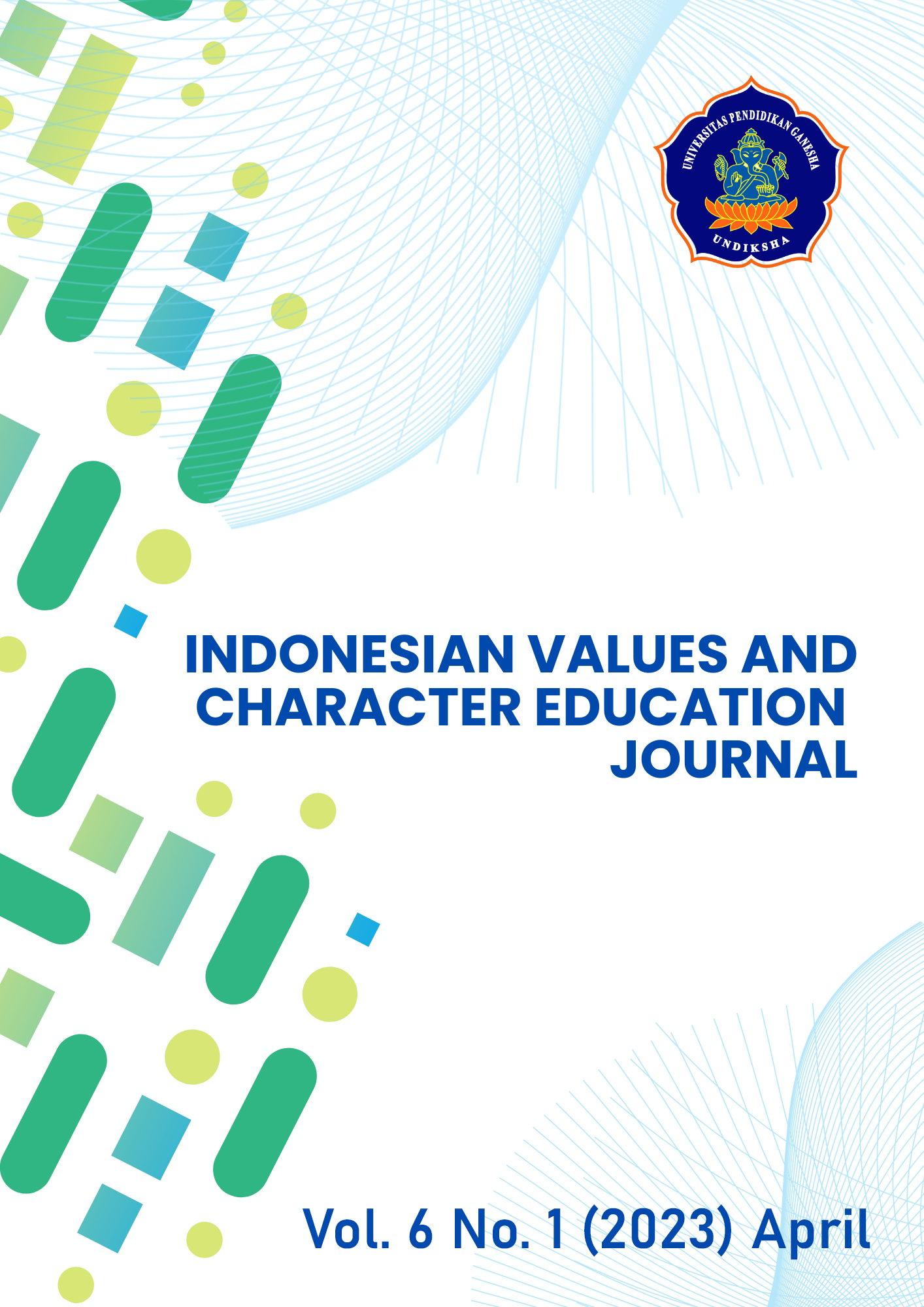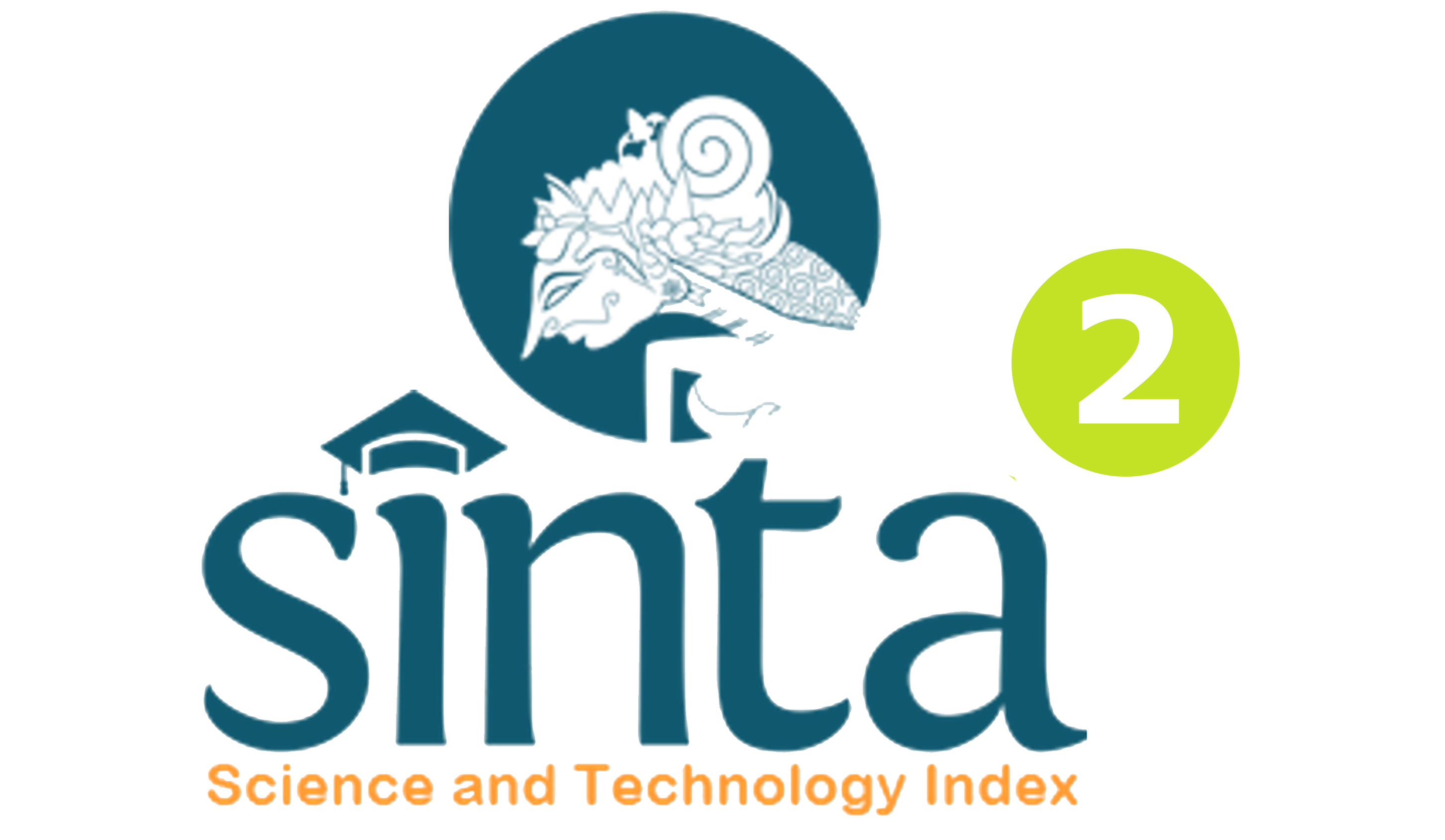Self-Concept Used by Autonomous Multilingual Learner for Improving Speaking Ability
DOI:
https://doi.org/10.23887/ivcej.v6i1.45907Keywords:
Language Learning, Learner Autonomy, Multilingual, Self-Concept, SpeakingAbstract
English for good communication among countries due to the related phenomenon, nowadays, there are increasingly diverse of society from their ways of spoken languages or expressing their life. There are several difficulties in learning foreign languages such as insecurity of dual abilities, comments from other people, unwillingness to learn, fear of taking a risk for correcting other people’s oversight, difficulty to get the facilities, and getting rid of boredom. The purpose of this research is to analyze the self-concept used by Fiki Naki as an autonomous multilingual learner. To be more detailed, the present research analyzes the self-concept or the ways of autonomous language learning that Fiki Naki uses by utilizing social technology such as Fiki Naki’s Youtube, Podcast, and Maxstream for improving his speaking ability. This research used a document analysis as a qualitative research method and Fiki Naki’s YouTube videos will be the research object for completing the analysis. There is three steps model in data analyzing such as; data reduction, data presentation, and conclusion drawing /verification. The findings describe some ways that he used to master the basics of various languages. Later on, this research will be turned into a reference for language researchers to develop the concept of autonomous language learning.
References
Alamer, A., & Al Khateeb, A. (2021). Effects of using the WhatsApp application on language learners motivation: a controlled investigation using structural equation modelling. Computer Assisted Language Learning, 1–27. DOI: https://doi.org/10.1080/09588221.2021.1903042
Anggeraini, Y. (2018). Interactive teaching: Activities and the use of technology in EFL classroom. LANGUAGE CIRCLE: Journal of Language and Literature, 13(1), 1–6. https://doi.org/https://doi.org/10.15294/lc.v13i1.11131.
Bakoko, R., & Pratiwi, D. I. (2021). The application of cooperative principle in learning spoken English. International Journal of Education and Language, 1(1), 1–10. https://doi.org/10.5349/ijel.v1i01.
Beckers, J., Dolmans, D., & Van Merriënboer, J. (2016). e-Portfolios enhancing students’ self-directed learning: A systematic review of influencing factors. Australasian Journal of Educational Technology, 32(2). https://doi.org/10.14742/ajet.2528. DOI: https://doi.org/10.14742/ajet.2528
Begum, J. (2019). Learner autonomy in efl/esl classrooms in bangladesh: Teachers’ perceptions and practices. International Journal of Language Education, 3(1), 12–21. https://doi.org/10.26858/ijole.v2i2.6411. DOI: https://doi.org/10.26858/ijole.v1i1.6397
Bestari, A. C. Y., Faiza, D., & Mayekti, M. H. (2020). Instagram Caption As Online Learning Media On The Subject Of Extended Writing During Pandemic Of Covid-19. Surakarta English and Literature Journal, 3(1), 9. https://doi.org/10.52429/selju.v3i1.359. DOI: https://doi.org/10.52429/selju.v3i1.359
Bressington, D. T., Wong, W. kit, Lam, K. K. C., & Chien, W. T. (2018). Concept mapping to promote meaningful learning, help relate theory to practice and improve learning self-efficacy in Asian mental health nursing students: A mixed-methods pilot study. Nurse Education Today, 60(February 2017), 47–55. https://doi.org/10.1016/j.nedt.2017.09.019. DOI: https://doi.org/10.1016/j.nedt.2017.09.019
Darmawati, B., Rahman, M. A., & Halim, A. (2020). The implementation of literature-based instruction in EFL classroom: A case study in an Indonesian junior high school. Asian EFL Journal, 27(2), 211–226. https://doi.org/10.2991/assehr.k.201017.031. DOI: https://doi.org/10.2991/assehr.k.201017.031
Dewanti, P., Supuwiningsih, N. N., & Saridewi, D. P. (2021). Utilizing Educational Technologies to Optimize Student and Teacher Learning at Dharma Laksana Mataram Orphanage. Journal of Innovation and Community Engagement, 2(1), 11–20. https://doi.org/10.28932/jice.v2i1.3601. DOI: https://doi.org/10.28932/jice.v2i1.3601
Dung, P. T. T. (2021). The effects of Audiovisual Media on Students’ Listening Skills. International Journal of TESOL & Education, 1(1), 13–21. http://i-jte.org/index.php/journal/article/view/3.
Fatimah, A. S., & Santiana, S. (2017). Teaching in 21St Century: Students-Teachers’ Perceptions of Technology Use in the Classroom. Script Journal: Journal of Linguistic and English Teaching, 2(2), 125. https://doi.org/10.24903/sj.v2i2.132. DOI: https://doi.org/10.24903/sj.v2i2.132
Goris, J., Denessen, E., & Verhoeven, L. (2019). The contribution of clil to learners’ international orientation and efl confidence. The Language Learning Journal, 47(2), 246–256. https://doi.org/10.1080/09571736.2016.1275034. DOI: https://doi.org/10.1080/09571736.2016.1275034
Hou, A. C., & Shiau, W. L. (2020). Understanding Facebook to Instagram migration: a push-pull migration model perspective. Information Technology and People, 33(1), 272–295. https://doi.org/10.1108/ITP-06-2017-0198. DOI: https://doi.org/10.1108/ITP-06-2017-0198
Jones, R. G. (2011). Emerging Technologies Autonomous Language Learning. International Journal of Gynecological Cancer, 15(4), 4–11. https://doi.org/10.1046/j.1525-1438.1994.04040283.x. DOI: https://doi.org/10.1046/j.1525-1438.1994.04040283.x
Lai, Y., Saab, N., & Admiraal, W. (2022). Learning Strategies in Self-directed Language Learning Using Mobile Technology in Higher Education: A Systematic Scoping Review. In Education and Information Technologies (Issue 0123456789). Springer US. https://doi.org/10.1007/s10639-022-10945-5. DOI: https://doi.org/10.1007/s10639-022-10945-5
Lee, J. S., & Drajati, N. A. (2019). English as an international language beyond the ELT classroom. ELT Journal, 73(4), 419–427. https://doi.org/10.1093/elt/ccz018. DOI: https://doi.org/10.1093/elt/ccz018
Lin, V., Yeh, H.-C., Huang, H.-H., & Chen, N.-S. (2022). Enhancing EFL vocabulary learning with multimodal cues supported by an educational robot and an IoT-Based 3D book. System, 104, 102691. https://doi.org/https://doi.org/10.1016/j.system.2021.102691. DOI: https://doi.org/10.1016/j.system.2021.102691
Lutviana, R., & Mafulah, S. (2021). The use of slang words in online learning context of EFL class. EnJourMe (English Journal of Merdeka) : Culture, Language, and Teaching of English, 6(1), 55–62. https://doi.org/10.26905/enjourme.v6i1.6118. DOI: https://doi.org/10.26905/enjourme.v6i1.6118
Majid, N. A. (2017). The importance of teachers’ interpersonal communication skills in enhancing the quality of teaching and learning. World Applied Sciences Journal, 35(6), 924–929. https://doi.org/10.5829/idosi.wasj.2017.924.929.
Martí, O., Moliner, L., & Alegre, F. (2022). When CLIL is for all: Improving learner motivation through peer-tutoring in Mathematics. System, 106(February), 102773. https://doi.org/10.1016/j.system.2022.102773. DOI: https://doi.org/10.1016/j.system.2022.102773
Quinteros Baumgart, C., & Billick, S. B. (2018). Positive cognitive effects of bilingualism and multilingualism on cerebral function: A review. Psychiatric Quarterly, 89(2), 273–283. https://doi.org/10.1007/s11126-017-9532-9. DOI: https://doi.org/10.1007/s11126-017-9532-9
Rao, P. S. (2019). The Importance of Speaking Skills in English Classrooms. Alford Council of International English & Literature Journal(ACIELJ), 2(2), 18. https://www.researchgate.net/profile/parupalli-rao/publication/334283040_the_importance_of_speaking_skills_in_english_classrooms/links/5d21b2db458515c11c18dbf3/the-importance-of-speaking-skills-in-english-classrooms.pdf.
Ribeiro, S. (2015). Digital storytelling: An integrated approach to language learning for the 21st century student. Teaching English with Technology, 15(2), 39–53. https://www.ceeol.com/search/article-detail?id=408511.
Rojas-Drummond, S., Maine, F., Alarcón, M., Trigo, A. L., Barrera, M. J., Mazón, N., Vélez, M., & Hofmann, R. (2017). Dialogic literacy: Talking, reading and writing among primary school children. Learning, Culture and Social Interaction, 12, 45–62. https://doi.org/10.1016/j.lcsi.2016.09.005. DOI: https://doi.org/10.1016/j.lcsi.2016.09.005
Safira, Y. F., Hadi, M. S., & Zaitun, Z. (2021). an Analysis of English Language Teaching Activities During Covid-19 Pandemic At Smp Purnama Jakarta. Journal of Languages and Language Teaching, 9(2), 212. https://doi.org/10.33394/jollt.v9i2.3528. DOI: https://doi.org/10.33394/jollt.v9i2.3528
Sakkir, G., Dollah, S., & Ahmad, J. (2020). Students’ Perceptions toward Using YouTube in EFL Classrooms. Journal of Applied Science, Engineering, Technology, and Education, 2(1), 1–10. https://doi.org/10.35877/454ri.asci2125. DOI: https://doi.org/10.35877/454RI.asci2125
Selivanova, O. G., Gromova, C. R., & Mashkin, N. A. (2018). Improving student motivation for learning the second foreign language. XLinguae, 11(1), 218–229. https://doi.org/10.18355/XL.2018.11.01.18. DOI: https://doi.org/10.18355/XL.2018.11.01.18
Suardhana, I. P. (2022). The Code-Switching Used in Deddy Corbuzier’s Youtube Podcast. Pustaka : Jurnal Ilmu-Ilmu Budaya, 22(1), 49. https://doi.org/10.24843/pjiib.2022.v22.i01.p08. DOI: https://doi.org/10.24843/PJIIB.2022.v22.i01.p08
Suniyasih, N. M., Ratminingsih, N. M., & Budasi, I. G. (2020). Development of Multilingual Thematic Picture Dictionary: A Support for Literacy. Jurnal Pendidikan Dan Pengajaran, 53(3), 236. https://doi.org/10.23887/jpp.v53i3.27508. DOI: https://doi.org/10.23887/jpp.v53i3.27508
Suryanto, & Sari, Z. E. (2021). Difficulties and Strategies in Learning English: An Analysis of Students From English and Non-English Education Department in Indonesia. 518(ICoSIHESS 2020), 313–331. https://doi.org/10.2991/assehr.k.210120.140. DOI: https://doi.org/10.2991/assehr.k.210120.140
Tanjung, P. A., & Ashadi, A. (2019). Differentiated instruction in accommodating individual differences of EFL students. Celtic: A Journal of Culture, English Language Teaching, Literature, & Linguistics, 6(2), 63. https://doi.org/10.22219/celticumm.vol6.no2.63-72. DOI: https://doi.org/10.22219/CELTICUMM.Vol6.No2.63-72
Ticheloven, A., Blom, E., Leseman, P., & McMonagle, S. (2021). Translanguaging challenges in multilingual classrooms: scholar, teacher and student perspectives. International Journal of Multilingualism, 18(3), 491–514. https://doi.org/10.1080/14790718.2019.1686002. DOI: https://doi.org/10.1080/14790718.2019.1686002
Wijayanto, P. W., & Hernawati, E. (2019). Designing Android-Based Mobile Application for Language Learning (MALL) for the National Exam Simulation. Jurnal Edukasi Dan Penelitian Informatika (JEPIN), 5(2), 223. https://doi.org/10.26418/jp.v5i2.31226. DOI: https://doi.org/10.26418/jp.v5i2.31226
Xiao, J., & Li, M. (2019). a comparison of pupils’ motivation in integrated english and conventional elt in china. International Journal of Innovation and Research in Edcational Sciences, 6(5), 675–686. https://ir.canterbury.ac.nz/bitstream/handle/10092/17831/ICCE2019-Faiza-cameraready.pdf?sequence=3#page=643.
Downloads
Published
How to Cite
Issue
Section
License
Copyright (c) 2023 Indonesian Values and Character Education Journal

This work is licensed under a Creative Commons Attribution-ShareAlike 4.0 International License.








